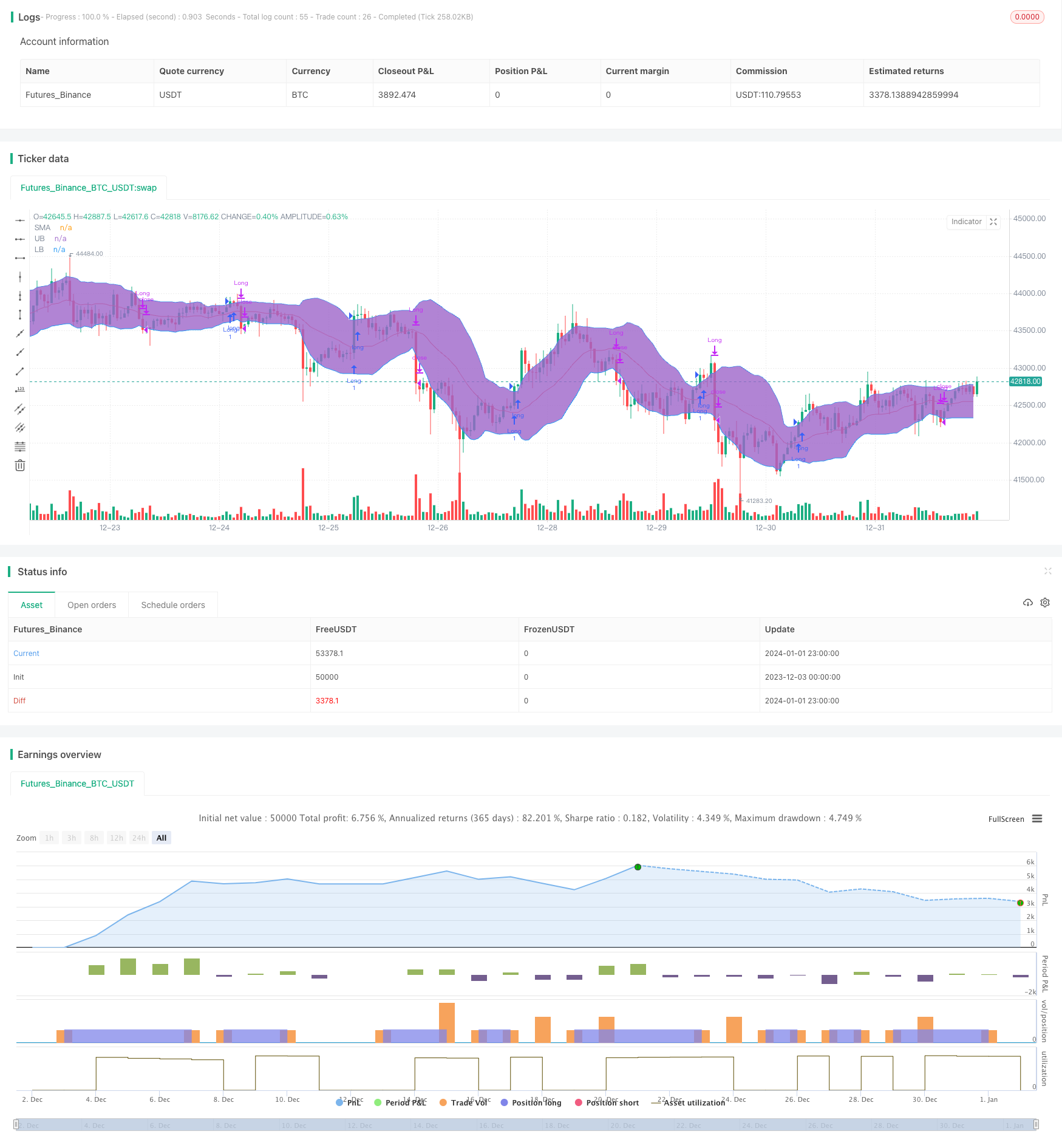
概述
宽带突破策略是一种趋势跟踪策略。它利用波动率范围来确定进场和出场的时机。具体来说,它使用布林带的上轨和下轨来判断价格是否突破。当价格突破上轨时做多,当价格跌破下轨时平仓。
策略原理
该策略基于布林带指标。布林带包含三条线:
- 中线 - n日简单移动平均线
- 上轨 - 中线 + k * n日标准差
- 下轨 - 中线 - k * n日标准差
这里的k值一般取1.5或2。当价格突破上轨时,表示股票进入强势区域,做多;当价格跌破下轨时,表示股票进入弱势区域,平仓。
该策略使用20日中线和1.5倍标准差构建布林带。当价格突破上轨时做多, exited有两种选择:
- 使用下轨止损
- 使用中线止损
如果是高波动股票,使用下轨止损效果更好。
优势分析
该策略主要有以下优势:
- 能够有效跟踪价格趋势,及时捕捉突破信号
- 利用波动率范围来确定进场点位,可以有效过滤噪音
- prebuiltr两种止损方式,可以根据股票特点选择最优方案
风险分析
该策略也存在一些风险:
- 突破信号可能是假突破,无法有效跟踪趋势
- 止损点设置不当可能造成过度止损
- 无法有效处理盘整市场
可以通过优化参数、结合其它指标等方式来降低这些风险。
优化方向
该策略可以从以下几个方面进行优化:
- 优化布林带的参数,寻找最佳的参数组合
- 结合交易量等指标来验证突破信号的可靠性
- 利用其它指标构建过滤机制,避免假突破
- 动态调整止损位置,降低止损风险
总结
宽带突破策略整体来说是一种较为经典的趋势跟踪策略。它可以通过参数优化和规则优化进行改进,使其更适应不同市场环境。该策略易于理解和实现,是量化交易的一个很好的入门策略选择。
策略源码
/*backtest
start: 2023-12-03 00:00:00
end: 2024-01-02 00:00:00
period: 1h
basePeriod: 15m
exchanges: [{"eid":"Futures_Binance","currency":"BTC_USDT"}]
*/
// This source code is subject to the terms of the Mozilla Public License 2.0 at https://mozilla.org/MPL/2.0/
// © Senthaamizh
//@version=4
strategy(title="Bollinger Band Breakout", shorttitle = "BB-BO", overlay=true)
source = close
length = input(20, minval=1, title = "Period") //Length of the Bollinger Band
mult = input(1.5, minval=0.001, maxval=50, title = "Standard Deviation") // Use 1.5 SD for 20 period MA; Use 2 SD for 10 period MA
exit = input(1, minval=1, maxval=2,title = "Exit Option") // Use Option 1 to exit using lower band; Use Option 2 to exit using moving average
basis = sma(source, length)
dev = mult * stdev(source, length)
upper = basis + dev
lower = basis - dev
if (crossover(source, upper))
strategy.entry("Long", strategy.long, qty=1)
if(exit==1)
if (crossunder(source, lower))
strategy.close("Long")
if(exit==2) //basis is good for N50 but lower is good for BN (High volatility)
if (crossunder(source, basis))
strategy.close("Long")
plot(basis, color=color.red,title= "SMA")
p1 = plot(upper, color=color.blue,title= "UB")
p2 = plot(lower, color=color.blue,title= "LB")
fill(p1, p2)